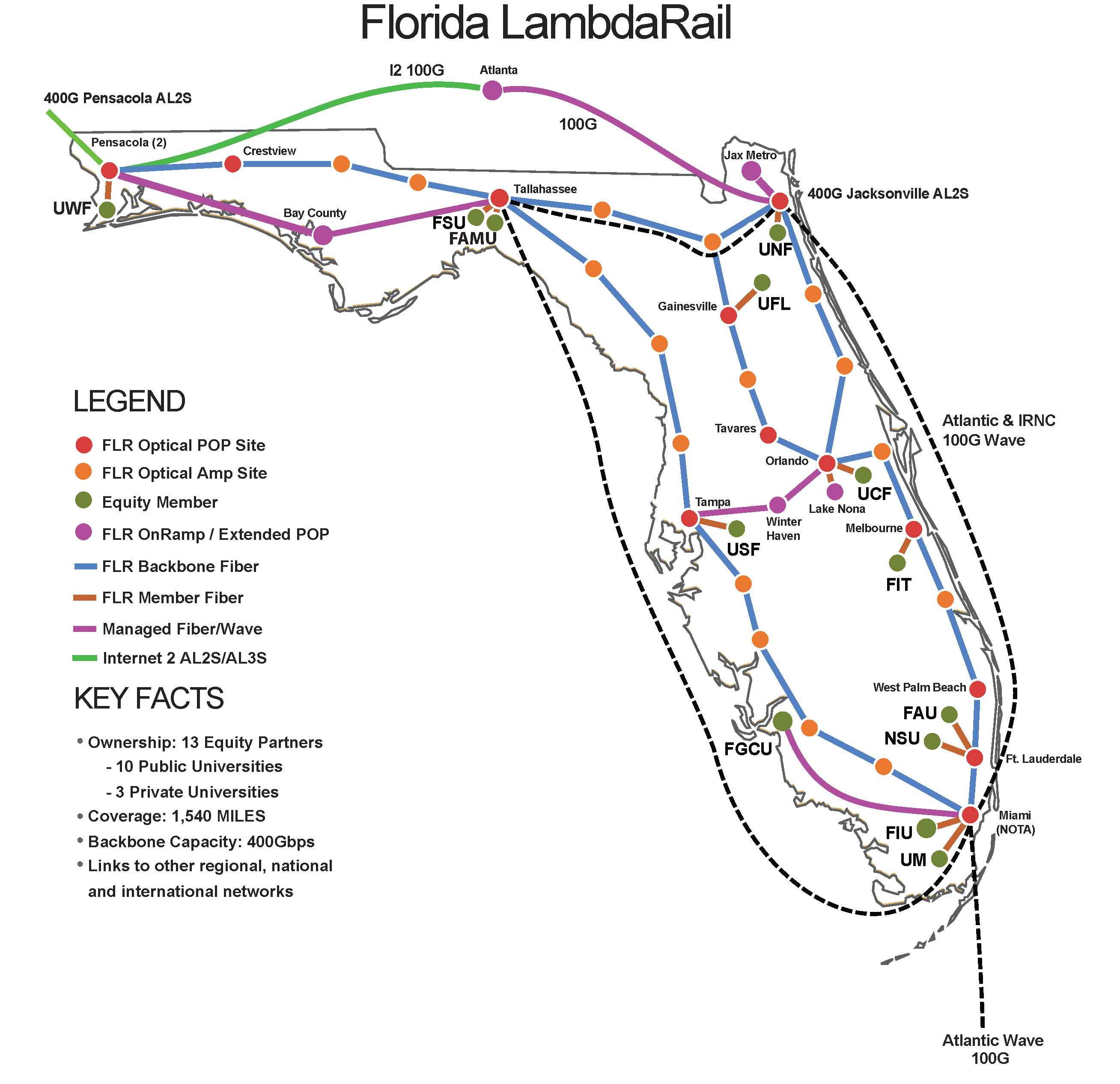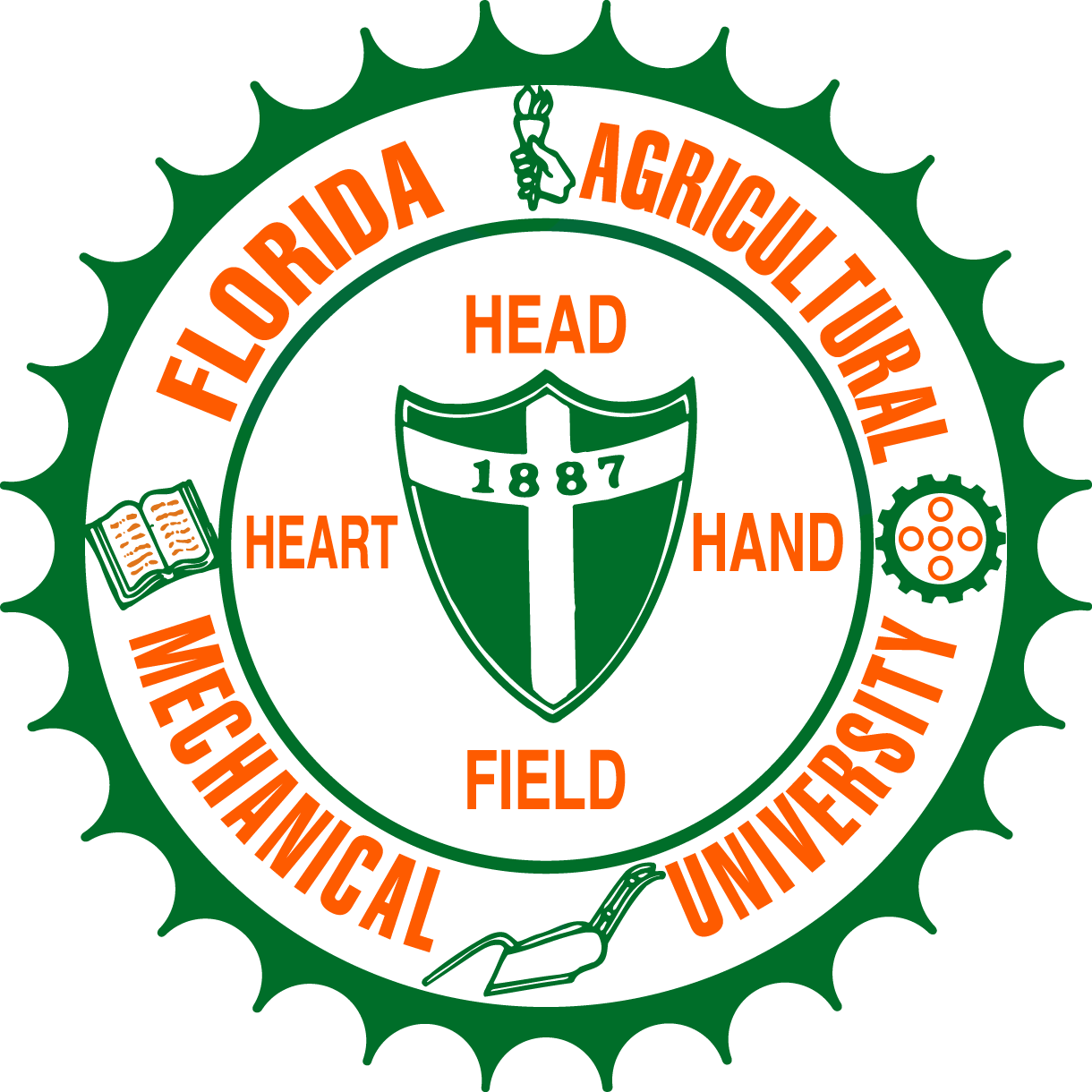November 1, 2023 – Florida LambdaRail (FLR), Florida’s Research and Education Network, proudly announced today it has completed a significant network expansion, propelling its capabilities to a remarkable 400 gigabits per second (Gbps) and establishing FLR among the world’s highest performing research and education networks. The achievement is a groundbreaking milestone in FLR’s mission to provide the highest quality ultra-high-speed connectivity to academic and research institutions where the demand for high-speed, reliable networking infrastructure has never been more critical.
The emergence of 400 Gbps networking is a pivotal advancement as it delivers the necessary bandwidth and performance to keep in front of the ever-increasing demands of research professionals by providing the ability to transmit and analyze massive datasets in real-time. With 400 Gbps networking, researchers can seamlessly exchange data, collaborate across geographic boundaries, and leverage cutting-edge technologies like AI and machine learning, which rely heavily on rapid data transfer. As research becomes increasingly data-driven, the adoption of 400 Gbps networking facilitates breakthroughs and innovation across diverse fields, ultimately paving the way for a brighter and more connected future.
“Florida’s researchers, educators, and innovators continually strive to unlock new frontiers of knowledge,” said Robert Grillo, chairman of the FLR Board of Directors and vice president and chief information officer for the Division of Information Technology at Florida International University. “By expanding the network to a world-leading 400 Gbps, FLR shows again our dedication to facilitating advanced research, scientific breakthroughs, and knowledge dissemination. This positions Florida as a prominent hub for cutting-edge discovery well into the future.”
FLR’s first network, FLRnet1, launched in 2004 at 10 Gbps and was later doubled to 20 Gbps in 2007. A network upgrade in 2010 accompanied the reveal of FLRnet2 which was followed by FLRnet3 and a major capacity upgrade to 100 Gbps in 2015. In March 2022 FLR took an important first step on the journey to 400 Gbps when the network became one of the first five in the country to complete a 400 Gbps connection to Internet2’s national infrastructure. FLR now sets a new standard in research and education networking by unveiling FLRnet4 with 400 Gbps networking across the entire backbone.
“We are thrilled to announce this landmark achievement in our network’s evolution,” said Jon Ellis, CEO of Florida LambdaRail. “This expansion reaffirms our commitment to our members as they push the boundaries of knowledge and expand economic opportunity in their communities. The exceptional technology supported by this network enables new possibilities for scientific collaboration and educational excellence and helps ensure a smarter more prosperous future for us all.”
FLRnet4 embodies a major infrastructure upgrade and as a result, is more efficient in nearly every regard. Features include an observed 80% reduction in power consumption and a nearly 85% reduction in the amount of space needed for core routers. As data centers become more crowded, and power costs rise, space and power concerns are always present. The efficiencies gained in rolling out the new FLRnet4 network will redound to the benefit of FLR’s members in the form of enhanced performance at reduced expense.
The integration of state-of-the-art Cisco routers and Ciena transponders forms the cornerstone of this transformative expansion. From Cisco, a global leader in networking technology, FLR has deployed the cutting-edge 8201-32FH and NCS 540 solutions, ensuring unrivaled performance and reliability for FLR’s members. FLR worked with Ciena, renowned for its optical expertise, to deploy the 6500 family of transponders. The new optronics were integrated into FLR’s existing open-line DWDM optical system, providing 400G backbone waves between core locations. This major infrastructure upgrade supports researchers and educators with lightning-fast transmission for their most data-intensive applications.
“Florida LambdaRail’s expansion to 400 Gbps demonstrates their visionary approach to meeting the growing needs of research and education institutions,” said Gurudatt Shenoy, Vice President of Product Management, Data Center and Provider Connectivity, Cisco. “Supported by Cisco’s industry-leading routers, FLR will be able to deliver robust and secure network services, empowering researchers and educators to push the boundaries of innovation.”
FLRnet4 Network Facts:
- 1540 Miles of dark fiber
- 28 optical sites
- Total of 8 FLRnet POPs
- 7 POPs have redundant core routers (large POP)
- 8th POP uses neighboring POP for redundancy (small POP)
- Each large POP has:
- 64x400G ports (can be reconfigured up to 256x100G ports)
- 64 1-25G ports
- Each small POP has:
- 32x400G ports (can be reconfigured up to 128x100G ports)
- 32 1-25G ports
- 400G Backbone between all POP locations.
- The Backbone may be upgraded with the usage of additional 400G ports and optics.
- Support for member connections from 1G to 400G
- Dedicated Performance monitoring and packet analysis hardware at each POP
- Large route scale (6M+ routes)
- Small power scale (77% reduction in power usage for core routers)
- Small footprint (8x smaller footprint for core routers)
- Enhanced peering. Upgraded peering connections to 10x capacity vs. FLRnet3.

